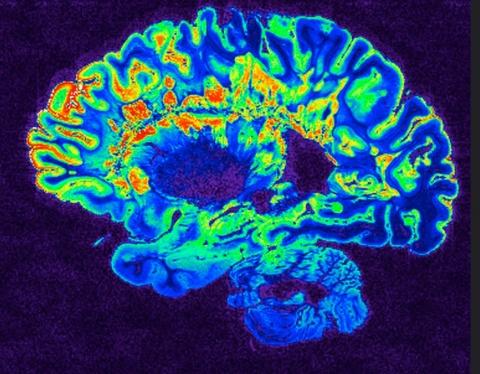
The final month of 2022 saw the release of 12 new peer-reviewed journal articles written or co-written by members of the Duke Neurology Department. Highlights of our most recent publications include an evaluation of a training program designed to improve the delivery of epilepsy care in Uganda, a review of recent advances in the treatment of carpal tunnel syndrome, and a discussion of treatment options for the autoimmune condition known as neuromyelitis optica spectrum disorder (NMOSD). Read the paragraphs below for short summaries of these and other articles published in December 2022, along with links to the original articles themselves.
Epilepsy, Sleep, and Clinical Neurophysiology
- Senior author Deborah Koltai, PhD, Brad Kolls, MD, PhD, and Aatif Husain, MD, contributed to a study evaluating an epilepsy training program designed to improve Ugandan health-care workers’ knowledge of epilepsy, its treatment, and its psychosocial effects. Their analysis found the training program successfully improved workers’ knowledge of epilepsy assessment, diagnosis, and management and was well received by their audience. Read their full study in Epilepsy & Behavior.
General and Community Neurology
- Joel Morgenlander, MD, and recent Duke Neurology resident Alan Tesson, Jr, MD, were the senior authors of a new case report discussing a 73-year-old woman with a rare cause of isolated hypoglossal nerve palsy caused by a high cervical osteophyte. Read their discussion and their clinical pearls in Case Reports in Neurological Medicine.
- Interventions targeting healthy behaviors such as physical activity, diet, and sleep may improve mood as well as cardiovascular health, a new study has found. The study examined associations between anxiety, depression, and cardiovascular health metrics in young adults, finding both conditions were associated with poorer heart health. Margarethe Goetz, PA-C, PhD, was a co-author of the study, which appeared in the Journal of the American Heart Association. Read it here.
Neuromuscular Disease
- Many new insights into the epidemiology, diagnosis, and treatment of carpal tunnel syndrome have emerged in the past 6 years. Lisa Hobson-Webb, MD, was the senior author of a new study summarizing these insights and discussing the role of ultrasonography as a diagnostic tool as well as new surgical and non-surgical interventions for this condition. Read that article in The Lancet Neurology.
- As novel therapeutic interventions are being developed and tested among people living with amyotrophic lateral sclerosis (ALS), there is a need to better understand the symptoms and issues that have the greatest impact on the lives of individuals with the condition. Rick Bedlack, MD, PhD, contributed to a new, national, cross sectional study examining these symptoms and how they affect patients’ lives and quality of life. Read their findings in eClinical Medicine.
Stroke and Vascular Neurology
- Photoacoustic imaging (PAI) is a highly versatile imaging modality that can provide anatomical, functional, molecular, and metabolic information of biological tissues. Wuwei “Wayne” Feng, MD, MS, contributed to a new narrative review summarizing the scientific progress made using PAI to monitor cerebral blood vessel impairment and restoration after ischemic stroke in the past decade. Read that article in Frontiers in Neuroscience.
Translational Brain Sciences
- A new study demonstrates that activation of the transient receptor potential vanilloid-4 (TRPV4) channel in trigeminal ganglion sensory neurons drives pain by potentiating the release of pain mediator CGRP in mouse models of temporomandibular joint inflammation and masseter muscle injury. This finding highlights clinical potential in targeting TRPV4 and CGRP to alleviate TMD pain. Senior authors Abbie Suttle, MS, and Yong Chen, PhD, as well as Peng Wang, MS, Faviana Dias, PhD, Qiaojuan Zhang, Yuhui Luo, and Lauren Simmons, contributed to the article, which appears in The Journal of Pain. Read it here.
- A team including Shih-Hsiu “Jerry” Wang, MD, and John Ervin developed a new pipeline for neuronal proteomic profiling in young and aged animals. Their investigations of the PKC Pathway in C. elegans reveal the neuroprotective function of the TMC-1-GABA-PKC signaling axis in aging and disease conditions. Read the full article in Science Advances.
- A new article in Frontiers in Molecular Neuroscience found that spinal cord dorsal horn sensory gate in preclinical models of chemotherapy-induced painful neuropathy and contact dermatitis chronic itch becomes less leaky with Kcc2 gene expression-enhancing treatments. Yong Chen, PhD, Qiojuan Zhang, LeAnne Ding, and Xiangjun Shen contributed to this article. Read it here.
- A new article in the Journal of Alzheimer’s Disease investigated the associations between single nucleotide polymorphisms involved in the neurotrophin signaling pathway in the progression from mild cognitive impairment to Alzheimer’s disease. Michael Lutz, PhD, contributed to that article, which is available here.
Multiple Sclerosis and Neuroimmunology
- The rare autoimmune condition neuromyelitis optica spectrum disorder (NMOSD), has been thought to follow a progressive disease course but the influence of factors such as seropositivity and serum titer levels of antibodies to aquaporin-4 (AQP4) has not been fully explored. Senior authors Suma Shah, MD, and Duke medical student Nidhila Masha, as well as Dorlan Kimbrough, MD, Christopher Eckstein, MD, Nicholas Hudak, PA-C, MMS, Mark Skeen, MD, and Michael Lutz, PhD, performed a retrospective chart review of 53 people with this condition. Their analysis provides an updated contemporary view of the clinical course of NMOSD and shows a more favorable view of its disease course than earlier studies. Read that article in Multiple Sclerosis and Related Disorders.
Neurodegeneration and Neurotherapeutics
- Repeated mild traumatic brain injury is known to be associated with an increased risk for Parkinson’s diseases, but the specifics of this process have not been fully explored. Andrew West, PhD, contributed to a new study that sheds light on this area. West and colleagues devised an injury device to deliver a surgery-free repetitive mild TBI to rats and then induced human-like PD pathology by intracranially injecting recombinant αSyn preformed fibrils. Read what they found in Acta Neuropathologica Communications.